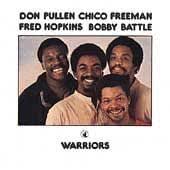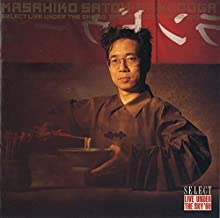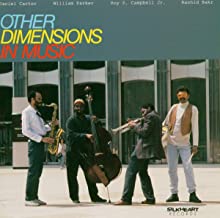
Daily Dose Of Jazz…
Giorgio Gaslini was born on October 22, 1929 in Milan, Italy and began performing aged 13 and recorded with his jazz trio at 16. In the 1950s and 1960s, Gaslini performed with his own quartet. He was the first Italian musician mentioned as a “new talent” in the Down Beat poll and the first Italian officially invited to the New Orleans Jazz Festival in 1976-77. He collaborated with leading American soloists, such as Anthony Braxton, Steve Lacy, Don Cherry, Roswell Rudd, Max Roach, but also with the Argentinian Gato Barbieri and Frenchman Jean-Luc Ponty.
Adapting the compositions of Albert Ayler and Sun Ra for solo piano, issued on the Soul Note label, he also composed the soundtrack of Michelangelo Antonioni’s La Notte, The Night, in 1961. In the early Seventies, he was the first holder of jazz courses at the Santa Cecilia Academy of Music in Rome.
As to contemporary music, he composed symphonic works, operas and ballets represented at the Scala Theatre in Milan and other Italian theatres. In addition from 1970 to 1977 he scored nine films, including Your Hands On My Body, Cross Current, and Kleinhoff Hotel. From 1991 to 1995, Gaslini composed works for Carlo Actis Dato’s Italian Instabile Orchestra.
Pianist, composer and conductor Giorgio Gaslini passed away on July 29, 2014 at age 84 in Borgo Val di Taro, Parma, Italy, where he had been living for years together with his longtime wife and fourteen dogs and cats.
More Posts: composer,conductor,history,instrumental,jazz,music,piano

Daily Dose Of Jazz…
Fred Hopkins was born on October 11, 1947 in Chicago, Illinois and grew up in a musical family, listening to a wide variety of music from an early age. Attending DuSable High School, he studied music under Walter Dyett, who became well-known for mentoring and training musicians. Originally inspired to learn the cello, without one at the school Dyett steered him to the bass. After graduating from high school, while working at a grocery store he was encouraged to pursue music more seriously.
Hopkins soon began playing with the Civic Orchestra of Chicago, where he was the first recipient of the Charles Clark Memorial Scholarship, and studying with Joseph Gustafeste, principal bassist for the Chicago Symphony Orchestra at the time, as well as picking up piano duo gigs. He also began playing with Kalaparusha Maurice McIntyre, with whom he made his debut recording in 1970 Forces and Feelings. At that point he started becoming more serious about improvisation, playing with Muhal Richard Abrams’s Experimental Band and other related groups.
The early 1970s saw him forming a trio called Reflection with saxophonist Henry Threadgill and drummer Steve McCall. In 1975, he left Chicago, moved to New York City, regrouped with Threadgill and McCall, renamed their trio Air, and went on to tour and record extensively. He also joined the AACM, immersed himself in New York’s loft scene. Over the following decades, he increasingly gained recognition, gigging with Roy Haynes.
He performed and recorded with Muhal Richard Abrams, Hamiet Bluiett, Anthony Braxton, Marion Brown, Arthur Blythe, Oliver Lake, David Murray, Diedre Murray, and Don Pullen, as well as with various groups led by Threadgill. Moving back to Chicago in 1997, he continued to perform, tour, and record with a wide variety of musicians. Double bassist Fred Hopkins passed away on January 7, 1999 at age 51 of heart disease at the University of Chicago Hospital.
More Posts: bandleader,bass,history,instrumental,jazz,music

Daily Dose Of Jazz…
Masahiko Satoh was born on October 6, 1941 in Tokyo, Japan and the family home contained a piano. He started playing at the age of five, and twelve years later he began playing professionally accompanying singers, magicians, and strippers at a cabaret in the Ginza district.
By 1959 Satoh began playing in Georgie Kawaguchi’s band, together with alto saxophonist Sadao Watanabe and tenor saxophonist Akira Miyazawa. After graduating from Keio University, at the age of 26 he moved to the United States to study at the Berklee College of Music. During those two years of study, he read about composing and arranging, earned money working in a food shop, and played the piano in a hotel.
1968 had Masahiko writing and conducting the music for a series of pieces that were combined with dance and performed around New York City. After returning to Japan, he recorded Palladium, his first album as a leader, and appeared on a Helen Merrill album.
In the late 1960s and early 1970s, his career led him to perform in a free, percussive style. Masahiko played at the 1971 Berlin Jazz Festival as part of a trio, using at the time an unusual ring modulator to alter the sound. During that period he recorded with Attila Zoller, Karl Berger, and Albert Mangelsdorff. He wrote the psychedelic music for the 1973 anime film Belladonna of Sadness.
He went on to write arrangements for recordings led by, among others, Helen Merrill, Kimiko Itoh, and Nancy Wilson. He arranged for strings and quartet on Art Farmer’s 1983 album Maiden Voyage, formed a large group, named Rantooga, that combined various forms of folk music from around the world, and composed for film, television, and advertisements. By the early 1990s pianist, composer, and arranger Masahiko Satoh composed music for a choir of 1,000 Buddhist monks and now spends 70% of his time arranging and composing, the rest on playing and recording.
More Posts: arranger,bandleader,composer,history,instrumental,jazz,music,piano

Daily Dose Of Jazz…
Rashid Bakr was born Charles Downs on October 3, 1943 in Chicago, Illinois but grew up in Bronx, New York from the age of four. His decision to become a musician came from the profound influence of John Coltrane had on him, along with his uncle, drummer Papa Jo Jones. As a child surrounded by jazz musicians growing up, he was given his first set of sticks by Art Blakey and was soon sitting in with his uncle in a Dixieland band.
He attended Queens College studying chemistry and psychology and on to Brooklyn College grad school gaining a degree in clinical psychology. While in college he never missed a Coltrane or Miles Davis performance and his father bought him his first drum set.
During the Seventies, after college and a stint in the Army saxophonist Bobby Zankel took him to an auspicious audition for him with Cecil Taylor, becoming part of his big band. He was active in the New York City loft jazz scene, performing at venues such as Rashied Ali’s Ali’s Alley and Sam Rivers’ Studio Rivbea. He was a member of Ensemble Muntu with Jemeel Moondoc, among others.
In 1976, Bakr performed in a production of Adrienne Kennedy’s A Rat’s Mass directed by Cecil Taylor at La MaMa Experimental Theatre Club in the East Village of Manhattan. Also in the production were Jimmy Lyons, Andy Bey, Karen Borca, David S. Ware, and Raphe Malik. Taylor’s production combined the original script with a chorus of orchestrated voices used as instruments. 1981 saw him with Taylor touring Europe for three years before returning to New York City.
Free jazz drummer Rashid Bakr is a member of Other Dimensions in Music with Roy Campbell, Daniel Carter, and William Parker.
More Posts: drums,history,instrumental,jazz,music

Daily Dose Of Jazz…
Bill DeArango was born William Louis DeArango on September 20, 1921 in Cleveland, Ohio. A self-taught on guitar, while attending Ohio State University, he played with Dixieland bands at night. After serving in the Army from 1942–44, he moved to New York City and worked first with Don Byas and Ben Webster.
A year later, Bill was playing on an album with Sarah Vaughan, Charlie Parker, and Dizzy Gillespie. Working as a sideman with Eddie “Lockjaw” Davis, Ike Quebec, Slam Stewart, he then led his own band with Terry Gibbs.
In 1947, DeArango returned to Cleveland and performed locally for two decades, recorded an album with pianist John Williams in 1954. By the 1960s had opened up a guitar store, taught guitar lessons, and late in the decade, he managed the rock band Henry Tree. Performing regularly in the Seventies at Cleveland’s Smiling Dog Saloon working with Ernie Krivda and Skip Hadden, mixing hard rock and free jazz.
His next recording was on the album Another Time/Another Place by Barry Altschul, then 298 Bridge Street by Kenny Werner, and Names by Jamey Haddad. In 1993, he released his second solo album, Anything Went, with Joe Lovano.
He entered a nursing home in 1999 and suffered dementia until his death seven years later, although he continued performing locally until late 2001. Guitarist William DeArango passed away on December 26, 2005 in his hometown.
More Posts: arranger,bandleader,composer,guitar,history,instrumental,jazz,music



